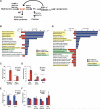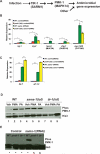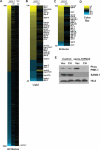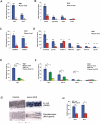s-Adenosylmethionine Levels Govern Innate Immunity through Distinct Methylation-Dependent Pathways
- PMID: 26321661
- PMCID: PMC4598287
- DOI: 10.1016/j.cmet.2015.07.013
s-Adenosylmethionine Levels Govern Innate Immunity through Distinct Methylation-Dependent Pathways
Abstract
s-adenosylmethionine (SAM) is the sole methyl donor modifying histones, nucleic acids, and phospholipids. Its fluctuation affects hepatic phosphatidylcholine (PC) synthesis or may be linked to variations in DNA or histone methylation. Physiologically, low SAM is associated with lipid accumulation, tissue injury, and immune responses in fatty liver disease. However, molecular connections among SAM limitation, methyltransferases, and disease-associated phenotypes are unclear. We find that low SAM can activate or attenuate Caenorhabditis elegans immune responses. Immune pathways are stimulated downstream of PC production on a non-pathogenic diet. In contrast, distinct SAM-dependent mechanisms limit survival on pathogenic Pseudomonas aeruginosa. C. elegans undertakes a broad transcriptional response to pathogens and we find that low SAM restricts H3K4me3 at Pseudomonas-responsive promoters, limiting their expression. Furthermore, this response depends on the H3K4 methyltransferase set-16/MLL. Thus, our studies provide molecular links between SAM and innate immune functions and suggest that SAM depletion may limit stress-induced gene expression.
Copyright © 2015 Elsevier Inc. All rights reserved.
Figures







References
-
- Couillault C, Pujol N, Reboul J, Sabatier L, Guichou J-F, Kohara Y, Ewbank JJ. TLR-independent control of innate immunity in Caenorhabditis elegans by the TIR domain adaptor protein TIR-1, an ortholog of human SARM. Nature immunology. 2004;5:488–494. - PubMed
Publication types
MeSH terms
Substances
Grants and funding
LinkOut - more resources
Full Text Sources
Other Literature Sources
Molecular Biology Databases
Research Materials

